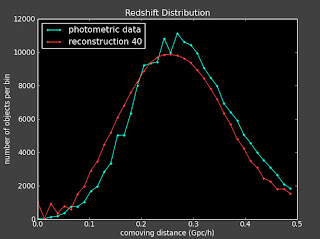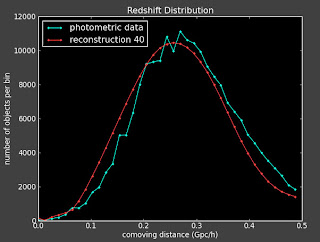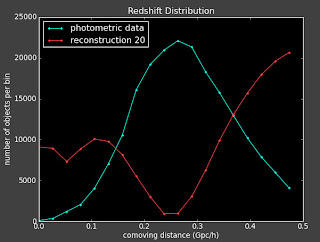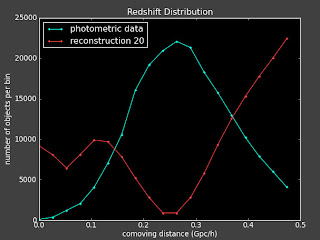In her email on March 10, subject: improving cross-corr
"Go to the part of getCoeff in the crl.py file. There are two choices for for the matrix B (for a flat prior and for a linear prior). Comment out the linear and uncomment the flat, and rerun to see if you get the same behavior for a particular binning choice, or if you get the same TYPE of behavior with the new B, but not correlated to the specific bin choice."
I did above and here are some plots (left is with a constant prior and right is with linear prior):




This doesn't seem to change things much. I talked to Alexia on the phone today and she also suggested I change the value of lambda to see how that effects things.
Currently:
if tol > 0
lam*=10
else:
lam/=10
I'm looking at what changing these numbers (lambda) does to the reconstruction...
if lambda is 5:
Flat prior
Linear prior
if lambda is 100:
Flat prior
Linear Prior:
if lambda is 1:
Linear prior
Flat prior
Alexia doesn't think I should worry to much about this right now, but I thought I'd make some plots for her to look and think about.
On the to do list:
Run reconstruction on real data
Check the mesh to see if this is the cause of the correlation function taking so long to compute.
On the to do list:
Run reconstruction on real data
Check the mesh to see if this is the cause of the correlation function taking so long to compute.













No comments:
Post a Comment